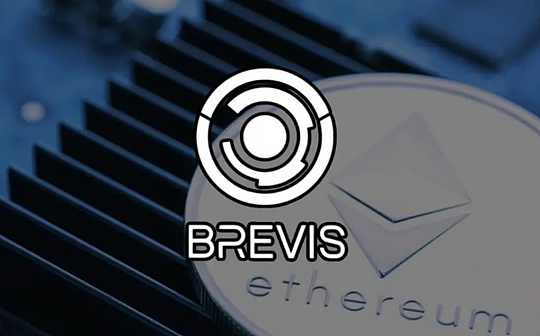

In the Web2 era, social networks are platform-centric, user data is locked in a closed ecosystem, algorithm recommendations are controlled by giants, and identities are attached to platform accounts.The vision of Web3 is to build an open, composable, and user-sovereignty-first social infrastructure.Whether this vision can be realized depends on whether its underlying architecture is truly decentralized.
Current industry consensus believes that the underlying structure of decentralized social protocols is built around three core dimensions:Identity system (Account/ID), data storage (Storage) and search & discovery mechanism (Search & Recommendation).These three dimensions not only jointly determine the degree of decentralization of the protocol, but also profoundly affect its long-term evolution path.
This article will deeply analyze the working mechanism of these three pillars, sort out the key breakthroughs made in the identity and storage layer, and focus on demonstrating why the search and recommendation mechanisms will become the core variables that determine the explosive power of social protocols in the future.
1. How do the three major dimensions determine the degree of decentralization and the direction of evolution?
1. Identity system: the cornerstone of user sovereignty
In traditional Web2 social platforms, user identities are assigned by the platform (such as Twitter usernames, WeChat IDs) and are not portable across platforms, and the platform can ban accounts at any time.This “tenant identity” deprives users of their digital sovereignty.
The identity system of Web3 pursuesSelf-Sovereign Identity (SSI), that is, users have full control over their identities, including creation, management, verification and migration.Typical representatives includeENS (Ethereum Name Service),Profile NFT by Lens Protocol,Farcaster’s Custody + Signer ArchitectureWait.These schemes take user identity away from the control of a single platform through cryptographic keys, on-chain registration or NFT-ified identities.
Reflection of the degree of decentralization: Whether the identity is verifiable, portable, non-tamperable, and created without permission.Impact on evolutionary direction: A powerful identity system supports cross-application social graph reuse, promotes “social composability” and forms a network effect flywheel.
2. Data Storage: Guarantee of Content Sovereignty
The Web2 platform centrally stores user-generated content (UGC) on private servers, so users cannot truly own their own data.And Web3 emphasizesData ownership belongs to the user, the protocol only provides read and write interfaces.
Decentralized storage solutions such asIPFS,Arweave,Ceramic Networketc., so that social content (posts, comments, following relationships) can be stored persistently, censorship-resistant, and referenced through DID (decentralized identifier) or on-chain pointers.For example, Lens Protocol stores post metadata in IPFS and records CID (Content Identifier) through smart contracts; Farcaster uses Merkle trees to anchor messages to the chain, and the actual data is distributed and stored.
Reflection of the degree of decentralization: Whether the data can be audited, migrated, censorship-resistant, and users can delete or transfer it independently.Impact on evolutionary direction: The open data layer spawns third-party clients, analysis tools and derivative applications, forming a “protocol + ecology” model rather than a “platform monopoly”.
3. Search and discovery mechanisms: the engine of network effects
Even with decentralized identity and open data, if users cannot efficiently discover content and connect with others, the protocol will fall into an “idling” state – there is infrastructure but no active ecosystem.The core moat of Web2 is itsPersonalized recommendation algorithm(Like TikTok’s recommendation engine, Twitter’s For You Feed).
In Web3, search and recommendation face dual challenges:
-
Technical level: It is difficult to build a high-performance, low-latency indexing and sorting system in a decentralized environment;
-
Governance level: If the recommendation logic is controlled by a single entity, it violates the spirit of decentralization; if it is completely open, it may be abused or inefficient.
Therefore, the design of the search and discovery mechanism directly determines:
-
Whether new users can quickly integrate into the community;
-
Whether high-quality content can be distributed effectively;
-
Whether the protocol has viral growth potential.
Reflection of the degree of decentralization: Whether the recommendation algorithm is transparent, auditable, customizable, and competitive (multiple recommendation engines coexist).Impact on evolutionary direction: Determining whether the protocol can move from a “geek toy” to the mass market is a key variable at the critical point of scale.
2. Major breakthroughs in the identity system and data storage layer
(1) Identity system: from wallet address to semantic social identity
Early Web3 identities only appeared as a string of hexadecimal wallet addresses (such as 0xAbC…), and the user experience was extremely poor.There have been many breakthroughs in recent years:
-
ENS (Ethereum Name Service):Mapping Ethereum addresses to human-readable names (such as vitalik.eth) has become the de facto standard for Web3 identities, with over 8 million registrations.
-
Lens Protocol:Transforming social identity into NFT, each Profile is an ERC-721 asset, and users can fully own and trade their social graph.
-
Farcaster:Adopting the “on-chain registration + off-chain signature” hybrid model, users register their identities through Ethereum addresses, and daily operations are broadcast off-chain through EdDSA signatures, taking into account security and performance.
-
Worldcoin/Gitcoin Passport:Introducing the Sybil Resistance mechanism to enhance identity credibility through biometrics or behavioral proof, providing a foundation for decentralized governance and airdrop distribution.
Together, these solutions promote the evolution of identity from “anonymous addresses” to “verifiable, composable, and trustworthy” social entities.
(2) Data storage: from temporary cache to permanent verifiable records
The maturity of decentralized storage technology has increased significantly in recent years:
-
Arweave:Provide “permanent storage” service, pay once, and the data will be permanently accessible.Writing platforms like Mirror.xyz rely on Arweave to store articles.
-
Ceramic Network:Build dynamic data streams (Streams) to support real-time updated decentralized databases, suitable for high-frequency interaction scenarios such as social graphs and comments.
-
IPFS + Filecoin:IPFS provides content addressing, and Filecoin provides an incentive layer to ensure storage persistence. It has been adopted by projects such as Lens and Orbis.
-
Tableland:Combining the SQL database with the EVM smart contract allows on-chain logic to operate off-chain table data, improving the efficiency of social application development.
These infrastructures make “users own data” no longer a slogan, but a practical technical reality.
3. Search and recommendation mechanism: key variables that determine explosive capabilities
Despite advances in identity and storage,Search and discovery are still the biggest bottlenecks for Web3 social networking.Here’s why:
1. High technical complexity
-
The decentralized network lacks a unified index and needs to build a distributed crawler and aggregation layer (for example, The Graph is used to query on-chain data, but has limited support for off-chain social content).
-
Real-time recommendations require low-latency computation, and most decentralized storage read speeds are much slower than centralized CDNs.
-
Personalized recommendations rely on user behavior data, but in the privacy-first Web3 environment, data collection is limited.
2. Incentive and governance issues
-
Who will run the recommendation engine?If it is officially operated by the protocol, the risk of centralization will reappear;
-
If it is open to third parties, a reasonable incentive mechanism needs to be designed (such as token rewards for indexers);
-
If the recommendation algorithm can be manipulated (such as brushing for likes and followers), it will lead to a decline in information quality.
3. Huge gap in user experience
Web2 users are accustomed to accurate recommendations from “thousands of people”.However, most current Web3 social applications are still stuck in the “reverse timeline” or “hot list” stage, lacking in-depth personalization, resulting in low retention rates.
Breakthrough direction: modular and composable discovery layer
The industry is exploring multiple innovation paths:
-
Decentralized indexing protocols: such as The Graph extension to support Ceramic data streams, Airstack
Build a unified identity and social graph API.
-
Pluggable recommendation engine: Users can choose different recommendation algorithms (such as “by interests”, “by region”, “by DAO members”), similar to browser plug-ins.
-
AI + zero-knowledge proof: Use ZK technology to achieve personalized recommendations (such as zkML) while protecting privacy.
-
Community-driven discovery: Incentivize users to participate in content curation through tokens (such as Farcaster’s Warpcast client introducing “channels” and “trending topics”).
-
Semantic search experiments: For example, Lens Protocol cooperates with AI companies to try to perform retrieval based on content semantics rather than tags.
key insights: The future winner is not necessarily “the best protocol”, but “the protocol with the best discovery mechanism”.Because only by allowing users to continue to see valuable content can a positive feedback loop be formed and drive the exponential growth of network effects.
Conclusion: The coordinated evolution of the three pillars
The success of decentralized social protocols is by no means achieved by a single technological breakthrough, but is the result of the collaborative evolution of the three dimensions of identity, storage, and discovery:
-
The identity system gives users sovereignty;
-
Data storage guarantees content freedom;
-
Search and recommendation activate network value.
Currently, the former two have begun to take shape, while the latter is still in “no man’s land.”Because of this,Search and recommendation mechanisms will become the main battlefield for the next stage of Web3 social innovation.Whoever can take the lead in building a decentralized and efficient discovery engine may replicate or even surpass the growth trajectory of the Web2 social giant and truly open a new era of open social networking for users.





